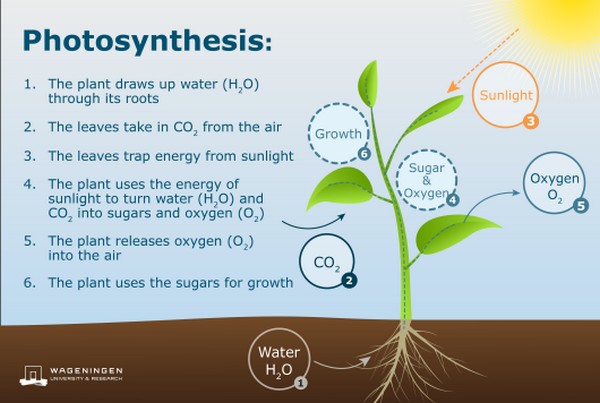Plants Extract Energy: Solar Secrets Revealed

Imagine if you could harness the power of the sun to fuel your daily activities without needing a charger or a battery. Plants do exactly that, and understanding how plants obtain energy can offer fascinating insights into energy conversion in plants. This process, known as plant photosynthesis, is a marvel of nature's engineering. So, let’s dive into the intricacies of light absorption and chloroplast function to uncover the secrets of solar radiation and how they interplay to fuel the plant kingdom.
The Magic of Plant Photosynthesis
Each morning, as the sun rises, plants spring into action, converting sunlight into chemical energy through the magical process of photosynthesis. But what exactly is this process? At its core, plant photosynthesis is the process by which plants, algae, and some bacteria convert light energy, typically from the sun, into chemical energy in the form of glucose. Think of it as nature's version of a solar panel, taking energy and converting it into fuel.
Light Absorption: The First Step
To understand how energy conversion in plants works, let’s delve into light absorption. Plants absorb light using pigments, with chlorophyll being the most well-known. Chlorophyll absorbs light in the blue and red parts of the visible spectrum, giving plants their characteristic green color. But how does this light absorption translate into energy?
When a photon of light hits a chlorophyll molecule, it excites an electron, which then travels through a series of reactions in the chloroplast. This electron transport chain is akin to a conveyor belt, transferring energy from one molecule to the next, ultimately leading to the production of ATP and NADPH, the energy currency of the cell. Think of it as a relay race where each runner (electrons) passes the baton (energy) to the next.
Chloroplast Function: The Powerhouse
Chloroplasts are the organelles where this remarkable transformation takes place. Located within plant cells, chloroplasts are home to the pigments that absorb light and the enzymatic machinery that converts light energy into chemical energy. But how do chloroplasts manage this complex process?
Chloroplasts contain thylakoid membranes, which are rich in pigments and enzymes. These membranes are organized into stacks called grana, providing a large surface area for the photosynthetic reactions to occur. Inside the thylakoids, a series of protein complexes and pigments work together to absorb light, transport electrons, and convert solar radiation into chemical energy.
The Role of Solar Radiation
Understanding how plants obtain energy also means appreciating the role of solar radiation. Plants optimally harness solar radiation by maximizing light absorption and minimizing energy loss. Have you ever wondered why leaves are often broad and flat? This structure helps to capture the maximum amount of light, ensuring efficient photosynthesis. The angle of the leaves, known as leaf orientation, can also be adjusted based on the intensity and angle of solar radiation, maximizing energy capture throughout the day.
Additionally, plants have mechanisms to dissipate excess light energy when it is in abundance, protecting their photosynthetic apparatus from damage. This process, known as non-photochemical quenching, allows plants to balance energy intake and prevent harm from too much solar radiation.
Applying Photosynthesis Principles to Technology
Nature’s brilliance in how plants obtain energy has inspired scientists to develop artificial photosynthesis systems. These systems aim to mimic the natural process, converting solar energy into chemical energy that can be used to power our homes and vehicles. Imagine a world where your car runs on the same energy principles that fuel a leaf!
Take Action and Explore More
Now that you understand the remarkable process of photosynthesis and how plants obtain energy, it’s time to dive deeper. Click here to explore more about energy conversion in plants and how you can apply these principles in your own life. The next time you see a plant basking in the sunlight, remember that it’s not just standing still—it’s actively converting solar radiation into life-sustaining energy.
FAQs
1. What are the primary pigments involved in plant photosynthesis?
Chlorophyll (a and b) is the primary pigment in plant photosynthesis, responsible for converting light energy into chemical energy. Other pigments like carotenoids and anthocyanins also play roles in light absorption and energy transfer within the chloroplast.
2. How do plants prevent damage from intense solar radiation?
Plants use non-photochemical quenching to dissipate excess light energy, protecting their photosynthetic machinery from damage during periods of intense solar radiation.
3. What structures in plant cells are responsible for photosynthesis?
The chloroplasts are the organelles responsible for photosynthesis in plant cells. Within chloroplasts, thylakoid membranes contain pigments and enzymes necessary for light absorption and energy conversion.
4. Can artificial photosynthesis replicate natural photosynthesis?
Scientists are developing artificial photosynthesis systems to mimic the natural process, converting solar energy into usable chemicals and fuels. However, these systems are still in the research phase and are not yet as efficient as natural photosynthesis.
5. How do leaf orientation and structure affect photosynthesis?
The broad and flat structure of leaves maximizes light absorption, while the leaf orientation can be adjusted to capture maximum sunlight throughout the day. These adaptations ensure efficient energy conversion in plants.
0 Response to " Plants Extract Energy: Solar Secrets Revealed"
Post a Comment